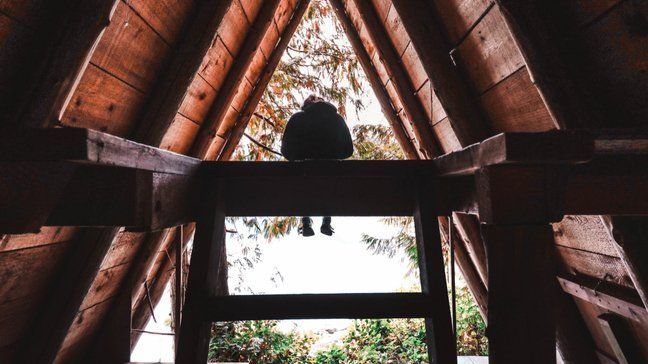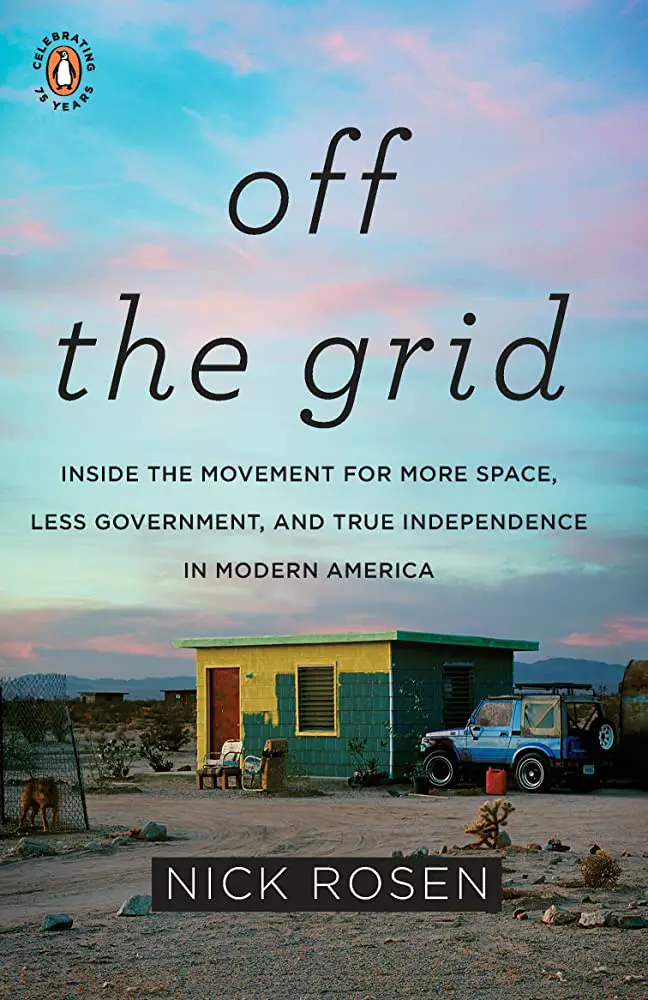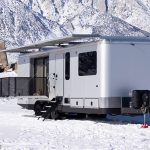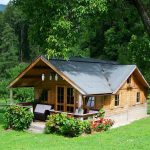Living off the grid can cost anywhere from $10,000 to $300,000 depending on the size and location of the property, energy sources, and lifestyle choices. Living off the grid has become a popular and sustainable choice for those looking to reduce their environmental impact and live a simpler lifestyle.
However, many people wonder how much it really costs to abandon traditional utilities and establish a self-sustaining homestead. While the cost can vary widely, it typically involves purchasing land, building or renovating a home, installing alternative energy sources such as solar panels or wind turbines, and creating a system for collecting and storing water.
Additionally, ongoing costs of living off the grid may include purchasing propane or wood for heating and cooking, maintaining equipment, and purchasing food if not growing it themselves. Despite the initial expense, many individuals and families find that the benefits of living off the grid outweigh the costs in terms of independence and self-sufficiency.

Credit: www.moneyunder30.com
Factors Affecting The Cost Of Off-Grid Living
Living off the grid has become a popular way of life for those who want to reduce their carbon footprint, reduce their dependency on public utilities, and lead a simpler life. While the idea of living off the grid can sound romantic and idyllic, the reality is that it’s a significant lifestyle change that comes with many challenges.
One of the most significant challenges that people face when considering living off the grid is cost. In this post, we will look at the factors that affect the cost of off-grid living.
Location
One of the most critical factors that affect the cost of off-grid living is the location. The location you choose will have an impact on every other factor that affects the cost of living off the grid. For instance, if you choose a location with a mild climate and ample sunlight, you will need fewer energy sources and less insulation, reducing your overall cost of living.
On the other hand, choosing a location that experiences extreme weather conditions or is far from resources like water and food will increase the cost of living off the grid considerably.
Type Of Dwelling
The type of dwelling you choose will also affect the cost of off-grid living. Building a cabin using natural and locally sourced materials can reduce the costs substantially, whereas building a home using conventional materials can be very expensive. Purchasing a pre-built home or rv can be an affordable option.
Still, it’s essential to ensure that the dwelling is energy-efficient and designed to meet your needs.
Energy Source
There are many options when it comes to energy sources for off-grid living, each with its costs. Solar power is one of the most popular forms of energy for off-grid living, and while the initial investment can be costly, it pays off in the long run as it requires no additional monthly fees.
Other energy sources like wind turbines, hydro power, and generators also have their cost implications that should be factored in when making a choice.
Water Source
A reliable source of water is essential for off-grid living. Drilling a well is the most common way of accessing water, although it can be costly and not guaranteed to yield positive results. Rainwater harvesting and installing a water filtration system are other options to consider, depending on the location.
Waste Management
Managing waste off-grid can be tricky, and several systems can be implemented, each with its cost implications. Composting toilets can be affordable but may require regular maintenance. Installing a septic system is more expensive, but it’s a one-time investment. Burning waste is also an option but should be done safely to avoid environmental pollution.
The cost of living off the grid is determined by several factors such as location, type of dwelling, energy source, water source, and waste management. While living off the grid can be an affordable lifestyle choice, it requires careful planning and consideration of all the associated costs.
Initial Investment And Set-Up Costs
Living off the grid is becoming increasingly popular as a way of life, allowing individuals to disconnect from the outside world’s utilities and live solely on their resources. But with this freedom comes an array of costs, both financially and physically.
In this blog, we discuss the initial investment and set-up cost of living off the grid, including land acquisition and preparation, building costs, purchasing off-grid technology, and other factors you should consider.
Land Acquisition And Preparation
Acquiring land can be costly and requires careful planning, research, and consideration. Besides, developing the land for off-grid living comes with additional expenses.
- Consider the location of the land and research local zoning laws and regulations before purchasing to ensure it meets your needs.
- Land preparation can be expensive, especially for off-grid living. You’ll need to clear the land, remove trees, and grade the site, among other things. Costs depend on the state of the land, but it can range anywhere from a few thousand dollars to tens of thousands of dollars.
- A water source is essential, and drilling a well or installing a rainwater catchment system can be expensive.
- Installing a septic system is necessary, but costs vary depending on your location.
Building Costs
Building a home off the grid requires unique considerations that traditional homes may not.
- Building off-grid homes requires specialized equipment and materials, such as solar panels, batteries, wind turbines, and generators.
- Depending on the size and design of the home, building costs can vary from $50,000 to $500,000 and beyond.
- Sustainable materials, such as adobe, wood, and stone, are costlier than conventional building materials.
- It’s essential to keep in mind that building codes and permits may vary based on your location.
Purchasing Off-Grid Technology
Off-grid technology is an investment that requires a significant upfront cost.
- Solar panels and batteries are necessary for off-grid living, and costs vary depending on their size, capacity, and quality. On average, a 3kw solar system costs around $10,000.
- Wind turbines may be beneficial for people who live in windy areas and can cost several thousand dollars.
- Generators can be less expensive to purchase, but they require ongoing fuel costs.
- Energy-efficient appliances, such as refrigerators and stoves, have a higher initial cost but can result in significant long-term savings.
Additional Costs To Consider
Besides the above expenses, there are additional costs to keep in mind when living off the grid.
- Additional costs, such as composting toilets, greywater systems, and water purification systems, are essential for off-grid living and vary in price depending on their complexity and quality.
- Maintenance costs for your off-grid technology should also be taken into account. Solar panels and batteries have a lifespan and will need to be replaced eventually.
- Finally, living off-grid requires a different lifestyle, and it’s essential to consider the impact it will have on your work, social, and leisure activities.
Living off-grid can be a fulfilling and life-changing experience that can provide peace, self-sufficiency, and sustainability. However, it’s essential to be fully aware of the initial investment and set-up costs it requires, including land acquisition, building costs, technology, and additional expenses.
Understanding the financial and physical requirements of off-grid living will help you make a well-informed decision about whether it’s the right lifestyle for you.
Ongoing Expenses
Living off the grid is a popular lifestyle choice for those who want to be more self-sufficient and reduce their carbon footprint. However, it’s important to keep in mind that it’s not a completely free lifestyle. We’ll discuss the ongoing expenses that come with living off the grid, including energy costs, water costs, food and supplies, and miscellaneous expenses.
Energy Costs
Living off the grid requires a source of energy, such as solar panels, wind turbines, or a generator. While the initial cost of these energy sources may be high, they can be more cost-effective in the long run.
- Solar panels are a common choice for off-grid living, but their efficiency can be impacted by weather and shade
- Wind turbines can be a good option, but they require consistent winds to generate enough power
- Generators can be a backup source of energy, but they can be expensive to operate
Water Costs
Living off the grid also means finding a source of water, as well as a way to treat and store it.
- Collecting rainwater is a popular option, but it requires adequate storage and filtration systems
- Digging a well can provide a reliable source of water, but it can also be expensive to drill
- Water conservation is essential for minimizing water usage and reducing costs
Food And Supplies
Living off the grid often means growing your own food and sourcing supplies locally. While this can be a cost-effective approach, it does come with its own set of expenses.
- Gardening requires seeds, tools, and fertilizer, as well as knowledge and experience
- Raising livestock, such as chickens or goats, requires feed and equipment, as well as space and time
- Sourcing supplies from local farmers and businesses can support the community, but may not always be cost-effective
Miscellaneous Expenses
Finally, there are a variety of other expenses to consider when living off the grid.
- Building or renovating a home to be off-grid can be costly upfront
- Insurance for off-grid homes can be more expensive than traditional homes
- Maintenance and repairs for energy and water systems can add up over time
Living off the grid can be a fulfilling and sustainable lifestyle choice, but it’s important to consider the ongoing expenses involved. With careful planning and budgeting, it’s possible to reduce costs and enjoy the benefits of self-sufficiency.
Achieving Sustainability And Financial Independence
Living off the grid means being self-reliant and sustainable when it comes to your living needs. It sounds like a fulfilling lifestyle option, but it’s also a considerable financial commitment. Despite the potential costs, achieving sustainable and financial independence is achievable through off-grid living.
We’ll break down the costs and benefits and explore how to make off-grid living more affordable.
Potential Savings In The Long Run
Living off the grid initially requires a significant investment for infrastructure, such as solar panels, generators, and batteries. However, in the long run, these investments help you save money significantly.
- Reduce or eliminate utility bills: When you own your sources of renewable energy and have a reliable water source, you’re not reliant on public utilities such as electricity and water.
- Saving money on food: Besides the satisfaction of growing your food, you can save money on groceries when you can produce your food.
- Avoiding inflation: When living off the grid, you are not dependent on external circumstances like inflation, which can increase the prices of utility bills and other life essentials.
Income-Generating Opportunities
When living off the grid, there are always opportunities to earn money and supplement your income.
- Use your skills to generate income: Living off the grid requires a specific skill set, and you can monetize those skills by providing services and products to people who are interested in this lifestyle.
- Start a home-based business: Off-grid entrepreneurship is on the rise, and you can sell products that both off-grid and online communities may be interested in purchasing.
- Rent out extra space: If you have extra space, you can earn some rental income. You could use your space for short-term rentals, eco-tourism activities, campsites, or creative retreats.
How To Make Off-Grid Living More Affordable
Making off-grid living affordable requires careful financial planning, practical choices, and a willingness to live with fewer resources without compromising quality of life.
- Research and prioritize the essential off-grid components: You’ll need to research the essential components and prioritize what to invest in first to get immediate benefits.
- Choose an affordable location: Living off the grid is not only about living in luxury locations. You can find affordable land that has all the essential resources you need to make your lifestyle more affordable.
- Reduce your cost of living: Living off the grid demands more self-sufficiency and fewer luxuries. You can be savvy with less-expensive methods to maintain your lifestyle with tools like bicycles, composting toilets, and wood fuel.
Achieving sustainability and financial independence is possible with off-grid living. By planning your finances, being creative, and prioritizing essential components, you can significantly reduce your living costs in the long run and potentially earn extra income. Life off the grid is a fulfilling and satisfying lifestyle option that requires careful thought and planning, but ultimately has the potential to change your life for the better.
Frequently Asked Questions Of How Much Does Living Off The Grid Really Cost?
What Is Living Off The Grid, And Why Do People Do It?
Living off the grid means living without reliance on public utilities. People choose this lifestyle for a variety of reasons, including a desire for independence and self-sufficiency, environmental concerns, and wanting to save money.
How Much Does It Cost To Set Up An Off-Grid Home?
The cost of setting up an off-grid home can vary widely depending on factors like location, size, and amenities. Basic cost estimates range from $10,000 to $50,000 or more, not including ongoing expenses like maintenance and repairs.
What Are Some Common Features Of Off-Grid Homes?
Off-grid homes often utilize renewable energy sources like solar panels and wind turbines, rely on water uptake and storage systems, and prioritize energy efficiency to reduce overall consumption and costs.
Can You Live Off The Grid In An Urban Or Suburban Area?
It’s possible to live off the grid in urban or suburban areas, but it may require more careful planning and creative solutions like rooftop gardens and rainwater catchment systems. However, zoning laws and homeowner associations may prohibit certain off-grid activities.
What Are Some Challenges Of Living Off The Grid?
Living off the grid can be rewarding, but it can also present a number of challenges, including learning new skills, dealing with maintenance and repairs, and managing resources like water and food carefully. It can also be isolating and present challenges in terms of staying connected to the larger community.
Conclusion
Living off the grid is not an easy task and requires a significant investment in terms of time, effort and money. However, the benefits it offers are unparalleled and worth the investment. From reducing your carbon footprint to gaining self-reliance, you can enjoy numerous advantages while living off the grid.
The cost of living off the grid varies depending on several factors, including the location, utility requirements, and lifestyle choices. While initial investments may seem high, they pay off in the long run by providing you with a significantly lower cost of living and financial freedom.
By creating your own power sources, growing your own food, and utilizing sustainable resources, you can create a life that is not only self-sufficient but also eco-friendly. Most importantly, when living off the grid, you are contributing to the preservation of the environment.
So, take a bold step towards living off the grid and enjoy a more sustainable and fulfilling life!

“My name is Leo Jacob, and I hold a Bachelor of Science degree with Honors in Applied Environmental Science and Sustainability from the University of the West of Scotland. Since childhood, I’ve been passionate about living an eco-friendly life. After completing my studies, I dedicated myself to finding simple ways to lead a more environmentally conscious lifestyle. I launched ecolifely.com to share my educational background and practical experiences with everyone, hoping to inspire others to join me in creating a greener, more sustainable world.”













Leave a Reply